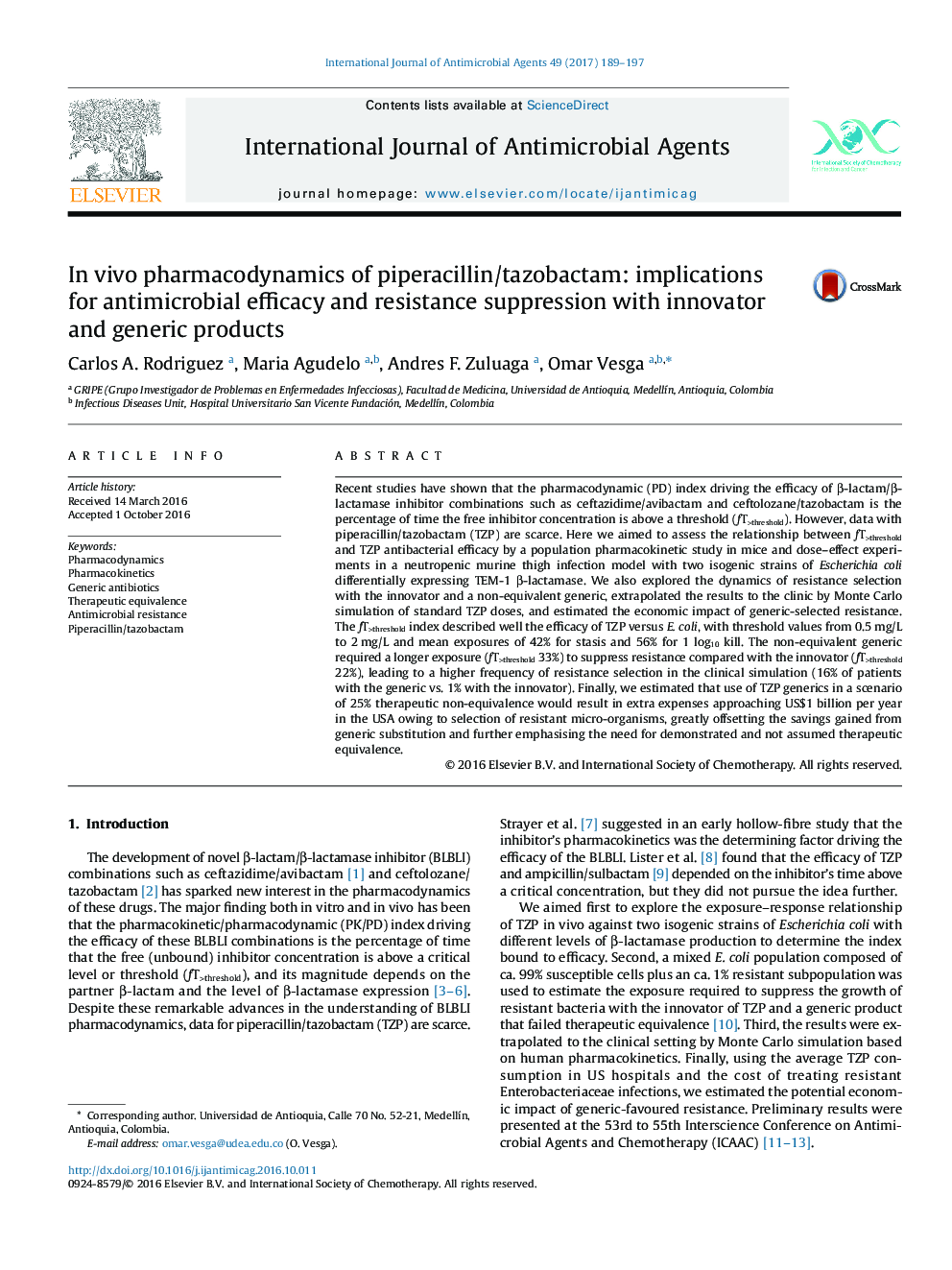| کد مقاله | کد نشریه | سال انتشار | مقاله انگلیسی | نسخه تمام متن |
|---|---|---|---|---|
| 5666971 | 1591746 | 2017 | 9 صفحه PDF | دانلود رایگان |

- PD index bound to the efficacy of TZP versus β-lactamase-producing E. coli is fT>threshold.
- Tazobactam threshold varies according to the level of β-lactamase expression.
- Generic TZP required longer fT>threshold to suppress resistance than innovator.
- Non-equivalent generic TZP may lead to higher resistance-related health costs.
Recent studies have shown that the pharmacodynamic (PD) index driving the efficacy of β-lactam/β-lactamase inhibitor combinations such as ceftazidime/avibactam and ceftolozane/tazobactam is the percentage of time the free inhibitor concentration is above a threshold (fT>threshold). However, data with piperacillin/tazobactam (TZP) are scarce. Here we aimed to assess the relationship between fT>threshold and TZP antibacterial efficacy by a population pharmacokinetic study in mice and dose-effect experiments in a neutropenic murine thigh infection model with two isogenic strains of Escherichia coli differentially expressing TEM-1 β-lactamase. We also explored the dynamics of resistance selection with the innovator and a non-equivalent generic, extrapolated the results to the clinic by Monte Carlo simulation of standard TZP doses, and estimated the economic impact of generic-selected resistance. The fT>threshold index described well the efficacy of TZP versus E. coli, with threshold values from 0.5âmg/L to 2âmg/L and mean exposures of 42% for stasis and 56% for 1 log10 kill. The non-equivalent generic required a longer exposure (fT>threshold 33%) to suppress resistance compared with the innovator (fT>threshold 22%), leading to a higher frequency of resistance selection in the clinical simulation (16% of patients with the generic vs. 1% with the innovator). Finally, we estimated that use of TZP generics in a scenario of 25% therapeutic non-equivalence would result in extra expenses approaching US$1 billion per year in the USA owing to selection of resistant micro-organisms, greatly offsetting the savings gained from generic substitution and further emphasising the need for demonstrated and not assumed therapeutic equivalence.
Journal: International Journal of Antimicrobial Agents - Volume 49, Issue 2, February 2017, Pages 189-197